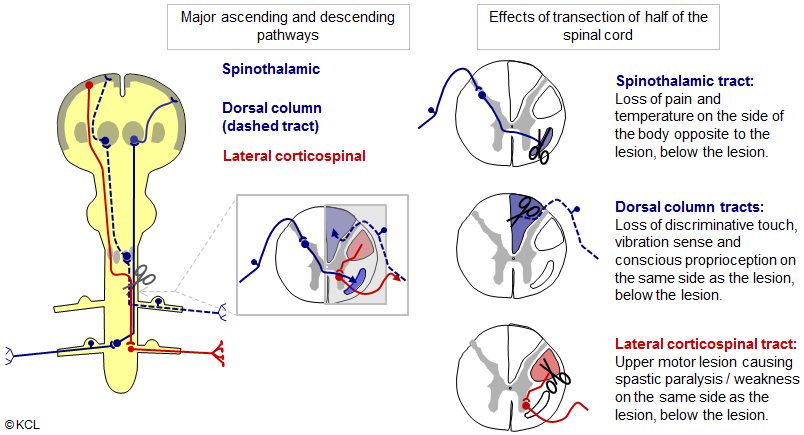- Key concepts
- Animation
Effects of spinal hemisection: Brown-Séquard syndrome

KEY CONCEPT:
Hemisection of the spinal cord severs all ascending and descending pathways on one side, giving a mixture of sensory and motor deficits on either left and right sides depending on the pathways interrupted. Note that other, smaller tracts, not shown here are also lesioned, e.g. the spinocerebellar tracts, which affect movement control (e.g. in ataxia), and axons controlling the autonomic system (giving multiple deficits) of homeostatis.
Effects of spinal hemisection: Brown-Séquard syndrome
Click/tap on the image 8 times to advance the animation.
KEY CONCEPT:
Hemisection of the spinal cord severs all ascending and descending pathways on one side, giving a mixture of sensory and motor deficits on either left and right sides depending on the pathways interrupted. Note that other, smaller tracts, not shown here are also lesioned, e.g. the spinocerebellar tracts, which affect movement control (e.g. in ataxia)
Select one of the tabs above, or choose a menu item to the left, to continue


